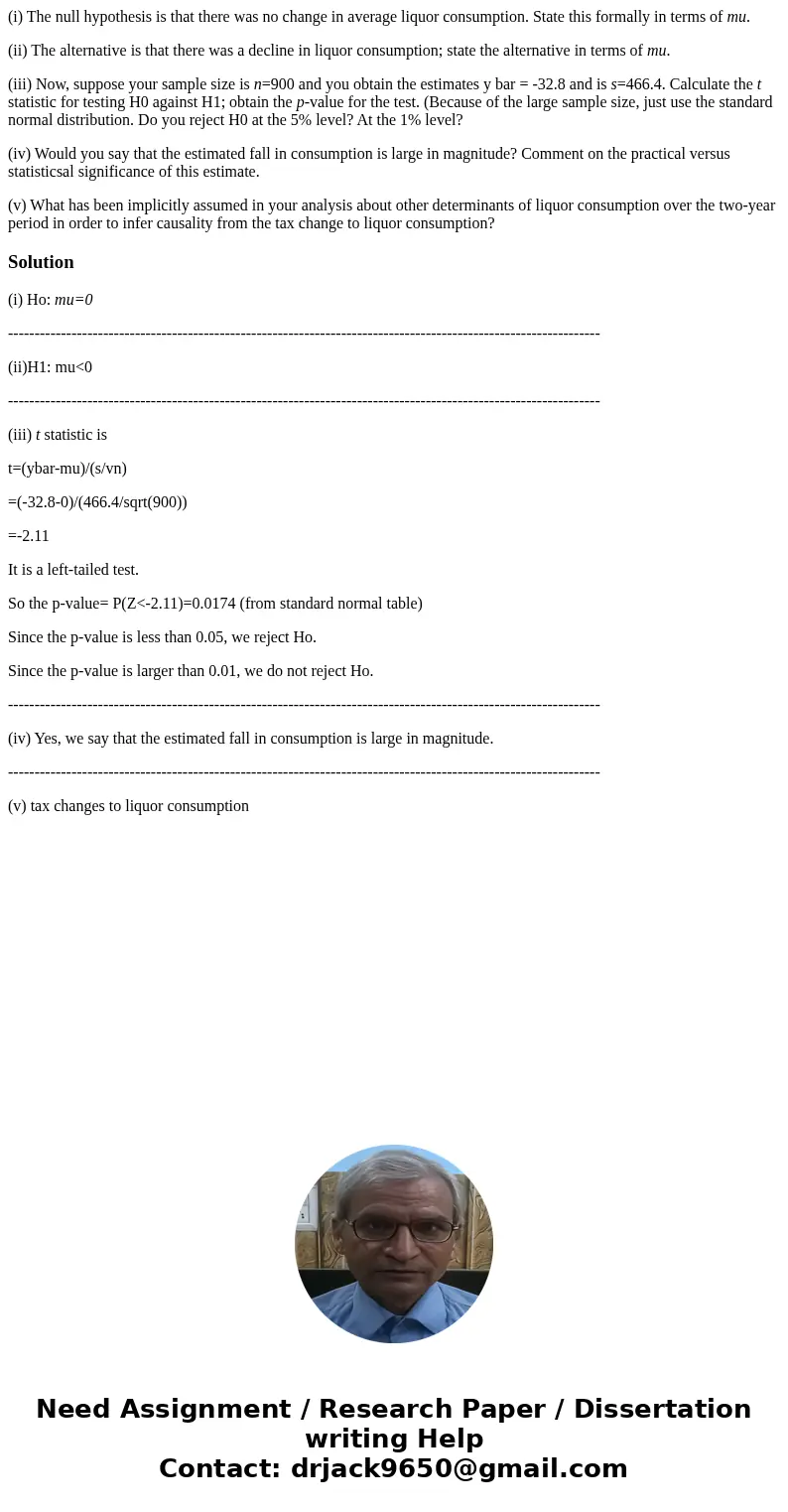i The null hypothesis is that there was no change in average
(i) The null hypothesis is that there was no change in average liquor consumption. State this formally in terms of mu.
(ii) The alternative is that there was a decline in liquor consumption; state the alternative in terms of mu.
(iii) Now, suppose your sample size is n=900 and you obtain the estimates y bar = -32.8 and is s=466.4. Calculate the t statistic for testing H0 against H1; obtain the p-value for the test. (Because of the large sample size, just use the standard normal distribution. Do you reject H0 at the 5% level? At the 1% level?
(iv) Would you say that the estimated fall in consumption is large in magnitude? Comment on the practical versus statisticsal significance of this estimate.
(v) What has been implicitly assumed in your analysis about other determinants of liquor consumption over the two-year period in order to infer causality from the tax change to liquor consumption?
Solution
(i) Ho: mu=0
----------------------------------------------------------------------------------------------------------------
(ii)H1: mu<0
----------------------------------------------------------------------------------------------------------------
(iii) t statistic is
t=(ybar-mu)/(s/vn)
=(-32.8-0)/(466.4/sqrt(900))
=-2.11
It is a left-tailed test.
So the p-value= P(Z<-2.11)=0.0174 (from standard normal table)
Since the p-value is less than 0.05, we reject Ho.
Since the p-value is larger than 0.01, we do not reject Ho.
----------------------------------------------------------------------------------------------------------------
(iv) Yes, we say that the estimated fall in consumption is large in magnitude.
----------------------------------------------------------------------------------------------------------------
(v) tax changes to liquor consumption

 Homework Sourse
Homework Sourse